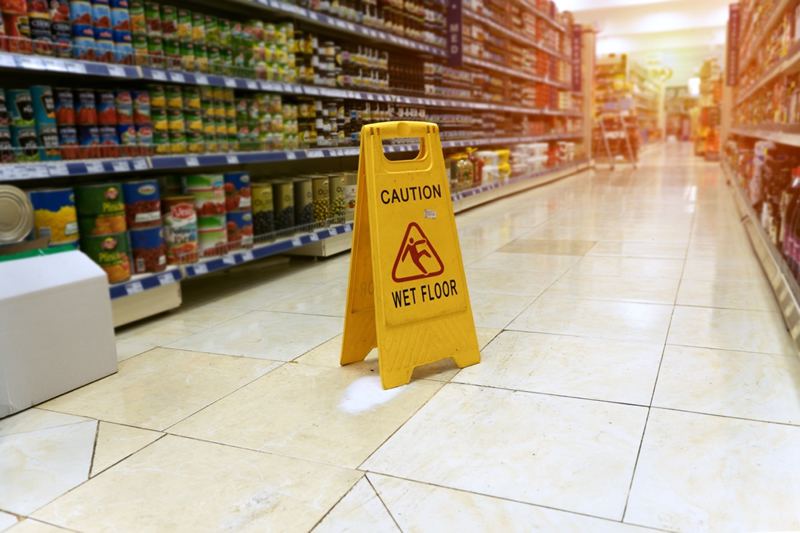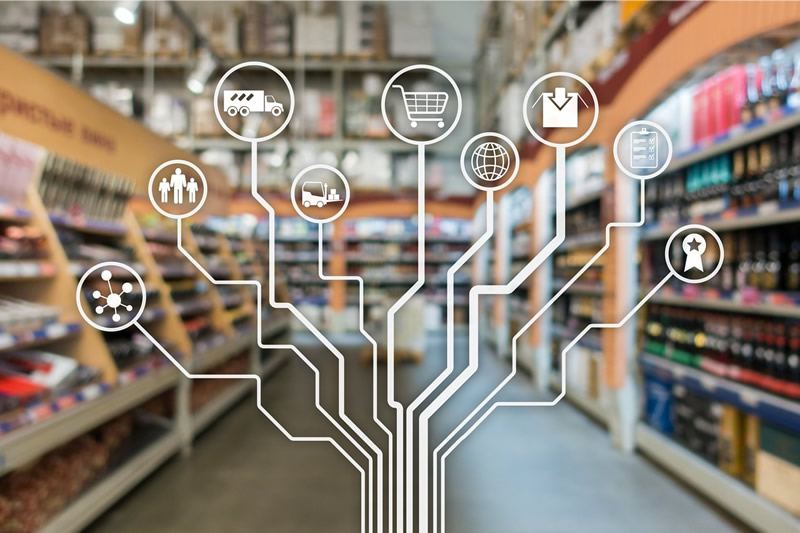How Loss Prevention Software for CCTV improves the Bottom Line in Retail
EXECUTIVE SUMMARY
Through this whitepaper we investigate the role that loss prevention plays in business and how implementing shrewd loss prevention strategies can make material improvements in the bottom line of any organisation, particularly when employing CCTV technology. We also explore the latest developments in machine learning and how recent developments in technology, bandwidth and processing power have opened the door to innovative AI based software solutions that encompass edge to cloud and the Internet-of-Things. These advancing technologies are set to revolutionise efficiency and risk mitigation for loss prevention specialists in a socially responsible way for retail.
INTRODUCTION
So, what is Loss Prevention and what role does it play in business?
Noteworthy is that a reduction in asset value or impairment under Generally Accepted Accounting Principles (GAAP), for example reducing the book value of inventory or stock through shrinkage, requires an equivalent write-down through the profit and loss account. The outcome impacts net earnings or the bottom line, reducing overall profitability, hence the term loss prevention. We can also see why this term is also used interchangeably with Asset Protection and why it remains a critical area for businesses. Particularly within retail, where external and internal theft can have both an instant and material affect upon overall profitability.
Consider making an average mark-up of 33.33% (25% gross profit) on an item that has a landed cost of £100, which is then lost through theft. It will take the sale of another 3 units, each generating a profit of £33.33, to cover the loss occurred by the stolen item. To combat and minimise loss, Loss Prevention professionals must therefore understand the most common causes of it, namely:
- External theft
- Internal theft
- Supplier fraud
- Inventory shrinkage
- Administrative errors
- Personal Injury
Due to the nature of retail, and typically the tight margins within, it is particularly exposed to shrinkage, which is the loss of inventory or stock. Shrinkage can be attributed to factors such as external theft or shoplifting and internal theft from employees. However, it can also be significantly impacted by administrative errors that lead to the overbooking of inventory, which can also be compounded by supplier fraud that typically falls into one of the following categories:
- Billing schemes
- Check tampering schemes
- Bribery or extortion schemes
One typical source of administration error can result from how products are packaged, booked in through warehousing and subsequently invoiced by suppliers. For example, a supplier may only ship in boxed cartons of say 6 units, which are priced as individual units and ordered in minimum quantities of 6 (one box). Now compound this by an admin error, for example either warehousing booking 1 box into stock as opposed to 6 units, which then have an incorrect cost applied to them, a factor potentially compounded by the supplier incorrectly invoicing units at box prices. This directly impacts upon critical supply chains that are responsible for driving revenue. It is also to some extent analogous to the Bullwhip Effect; wherein small disturbances down the chain, introduced by human error at critical touch-points, move further up the chain and require larger interventions to be resolved. They also generate huge inefficiencies and highlight the requirement for effective loss prevention and asset protection strategies to consider all common causes of loss associated with its domain.

KEY ISSUES FOR LOSS PREVENTION PROFESSIONALS
CCTV provides an active deterrent for external and internal theft, and gives Loss Prevention professionals a powerful technological asset. However, consider the investigation of shrinkage incidents that are over 30-days old, which may be triggered by discovery of a stock discrepancy in a particular area, and how to generate related alerts to avoid late reporting of them?
Current CCTV technology, whether using network video recorders or video management systems, typically store footage for only 30-days. This factor is driven by current technological constraints, and leaves retailers without any evidence after this period of time. Furthermore, if the investigation was triggered by a stock discrepancy, for example a system showing stock or inventory for a particular line but none were found to be on hand, this failure in the supply chain will have had an impact upon revenue through lost sales during the interim. For a scary thought, now sum this across all lines and all outlets, a point compounded by the fact that you cannot sell what you do not have. In this type of scenario, retailers are simply shutting the door well and truly after the horse has bolted, as it appears that nothing else can be done about it. Or can it?
Cloud by Ocucon, a loss prevention software solution that embraces recent improvements in bandwidth and reduced cost of storage, provides unlimited storage for unlimited CCTV cameras at an extremely cost effective price point. Furthermore, Ocucon recently partnered with SeeChange, which has complimentary AI software recognition technologies for CCTV aimed at mitigating risks for retailers. Through its SeeWare video analytics and recognition platform, SeeChange provides real time detection of in-aisle suspicious behaviour. A combination of both systems not only provides retailers with alerts to investigate suspicious behaviour, but also provides supporting evidence for periods that can significantly exceed 30-days. These innovative software solutions offer turnkey solutions for loss prevention specialists by providing proactive alerts for stock subject to suspicious activity along with supporting evidence for the reporting of it. They also facilitate rapid inventory verification, which is critical to supporting related supply chains and preventing loss of revenue by providing appropriate alerts and calls to action.
When considering the root causes of fraud, administrative errors and personal injury, it opens up the proverbial can of worms upon human behaviour. Research has shown that there is a natural human tendency to rationalise shortcuts under pressure, it can also lead to a phenomenon known as ‘Normalization of Deviance’, where people within an organisation become so much accustomed to a deviation that they don’t consider it as deviant, despite the fact that they far exceed their own rules for elementary safety. A combination of these factors can generate a poor perception of risk, as the lack of bad outcomes can reinforce the rightness of trusting past success instead of objectively assessing risk. A point noted within research from the Health and Safety Executive, which identified 15 individual human factors that play a significant, avoidable and common contributory role in trip and slip incidents, a key facilitator of personal injury claims.

In an increasingly litigious society, personal injury claims are presenting Loss Prevention professionals with a sizeable problem, costing businesses over $11bn per year in the US through trips, slips and falls alone. Noteworthy is that claims typically arrive after 90 days, an outcome that leads to businesses on the receiving end unable to refute them and to settle out of court, since they are unable to offer any effective line of defence. With both claim levels and claim rates continuing to increase year-on-year, this leaves businesses and organisations exposed to significant risk. In the US, for example, an average claim is $20,000 plus $50,000 which is typically the cost to defend such claims. The size of awards in personal injury claims has also proven to be a key driver of fraudulent behaviour and has attracted notable attention from fraudsters, although Cloud by Ocucon provides an affordable and effective loss prevention software solution for this issue.
What is becoming clear is the need for Loss Prevention professionals to develop and take a holistic view of their domain, considering both human and technological elements, their weaknesses and strengths and how they may be combined to deliver a whole greater than the sum of their collective parts. Noteworthy is that humans excel in areas that technology struggles, for example critical thinking and strategy formulation. However, humans are prone to heuristic biases, or cognitive shortcuts, which deliver a poor perception of risk, particularly when they are operating under pressure. This point is also supported by research from the Health and Safety Executive, which highlighted that a breakdown in the reporting of issues led directly to causing personal injury related incidents. These factors may be offset to a large degree by exploring technology and innovative machine learning software solutions, for example computers are good at things that human are not, in particular repetitive tasks, parallel processing, data manipulation and following strict rules.
Through taking a holistic view of Loss Prevention and Asset Protection we begin to recognise the advantage of combining the strengths of AI driven software technology with human strategic and critical thinking, wherein successful enterprises will be a combination of humans being human and computers being computers. This also feeds into the concept of Total Retail Loss developed by Professor Adrian Beck, who advocates taking a ‘big’ picture view of loss across the entire retail environment, so as to better understand how loss impacts profitability and how resources might be more effectively allocated for asset protection. Through taking such a view, Beck suggests that Loss Prevention can remain both a crucial and responsive function within the future of retail.
Viewing Loss Prevention through the lens of organisational performance, which may be expressed as the sum of individual performance, offers a deep insight into how asset protection through the correct combination of humans and computers can generate a source of competitive advantage for a business. The literature has long recognised the costs associated with disastrous mistakes. A key driver is an inability to correctly perceive risk, which delivers poor decisions. However, by using technology and the latest innovations in software to mitigate the risks of human behaviour and combining it with the strengths of human strategic and critical thinking, Loss Prevention professionals may improve organisational overall performance by taking a bottom-up approach. Consider Porter’s Generic Strategies:
- Cost leadership
- Differentiation
- Focus
Those that execute one of the above strategies the best, will earn the most profit by delivering highest customer perceived value. Taking a bottom-up approach consistent with emergence and removing or minimising costs, which would otherwise result from a multitude of poor individual decisions as they snowball through a firm, helps to improve overall competitiveness of it, particularly when summed across the entire organisation. This is not an insignificant result as it facilitates cost leadership within the above construct, a potent source of competitive advantage, which brings the importance of Loss Prevention in business to the fore. It is also a view consistent with the latest research by McKinsey, which advocates viewing organizations as decision factories to reduce the staggering cost of bad decisions.

CONCLUSION – The Future of Loss Prevention
So, what is the future of Loss Prevention and Asset Protection?
Firstly, to stop viewing issues in silos and secondly to develop comprehensive, coherent loss prevention strategies across the entire retail landscape that take into account the strengths and weaknesses of humans behaviour, along with those of technology. This may be achieved through using machine learning and AI driven software solutions to offset, or counteract what is a natural and poor perception of risk by humans, through quickly and efficiently generating alerts or effective calls to action. A factor that minimises the impact of heuristic bias within decision making and significantly reduces both the potential for and cost associated with disastrous mistakes. Humans can then use alerts as triggers to deploy their strengths of critical thinking and their ability to rapidly develop and deploy mitigation strategies to resolve related issues that currently remain way beyond the reach of computing.
With recent increases in network bandwidth, compute performance and subsequent decreases in cost, this level of AI technology is now within reach and has the potential to improve the competitive positioning of those that embrace it. These factors are also the driving force behind the Ocucon and SeeChange partnership, which will see the release of a range of innovative AI based software solutions throughout 2021 that can be built upon existing CCTV network infrastructure. Provided on or off customer networks, these solutions mitigate risk, reduce loss and negate liability cases for retailers.
REFERENCES
The Importance of Loss Prevention in Retail Businesses
Three ways to identify and combat vendor fraud
The Cost of Silence: Normalization of Deviance and Groupthink
Identifying human factors associated with slip and trip accidents
Business cost of slips, trips and falls
Scammer pretended to trip over juice then tried to claim cash from supermarket
7 Jobs Humans Can Do Better Than Robots And AI
Kahneman, D. Tversky, A. (1979) Prospect theory: An Analysis of Decision under Risk pp. 263-292. Econometric Society
AI Simplified: What Computers Are Good At
5 things machines can already do better than humans
Huselid, M., A. (1995). The Impact Of Human Resource Management Practices On Turnover, Productivity, And Corporate Financial Performance. Academy of Management Journal, 38 (3), pp 635-672.
Simmonds K (1986); The Accounting Assessment of Competitive Position; European Journal of Marketing 1980, Vol 20, Issue 1, pp16-32
Kotler, P., Keller, K., L., Brady, M., Goodman, M., Hansen, T. (2016). Marketing Management. Harlow: Pearson.
Ostroff, C., Fulmer, C., A., (2016). Convergence and emergence in organizations: An integrative framework and review. Journal of Organizational Behavior, Vol 37, pp S122-S145
Piercy, N., F., Morgan, N., A. (1990). Organizational Context and Behavioural Problems as Determinants of the Effectiveness of the Strategic Marketing Planning Process. Journal of Marketing Management Autumn 1990, Vol 6, Issue 2, pp127-144

